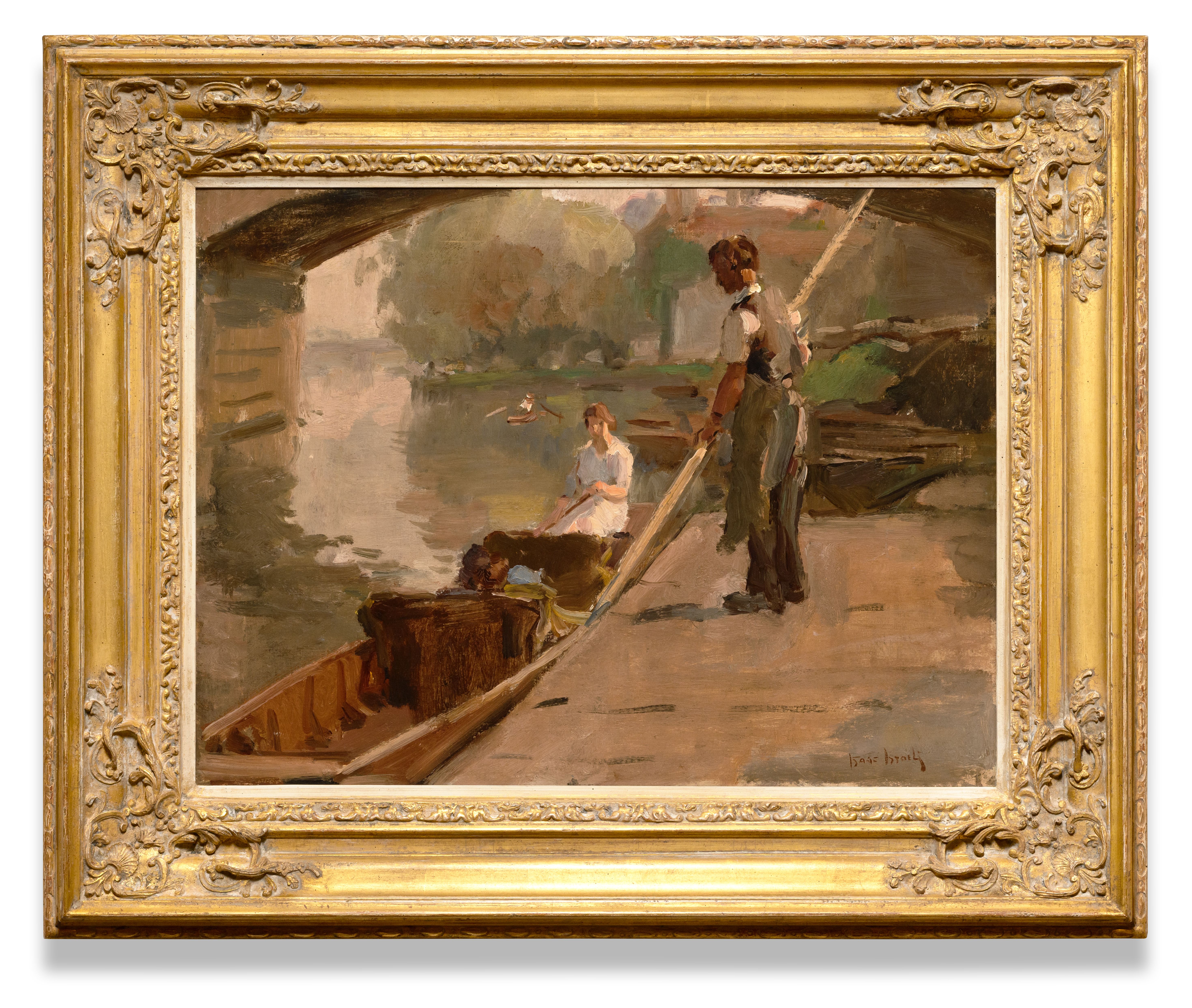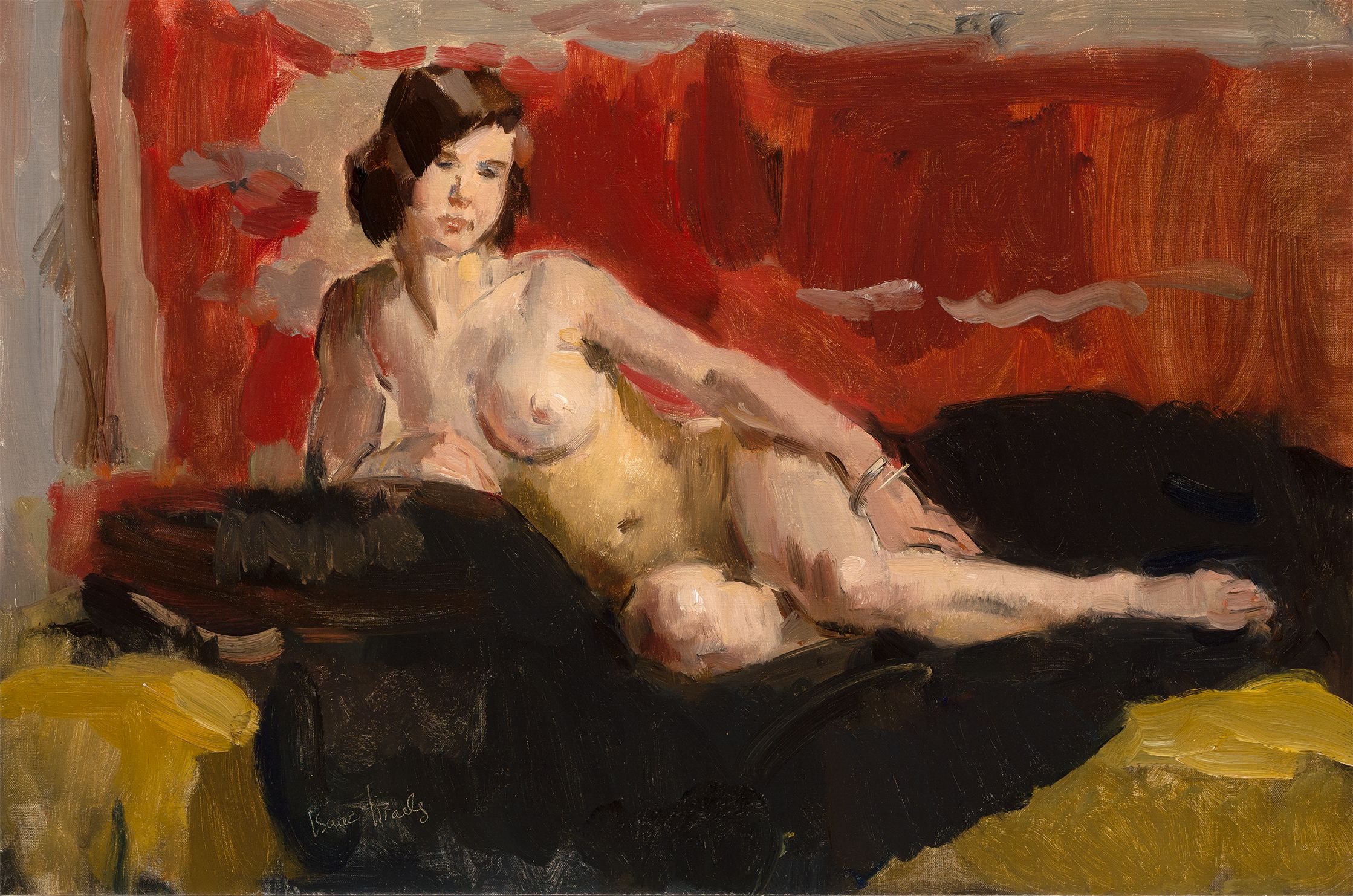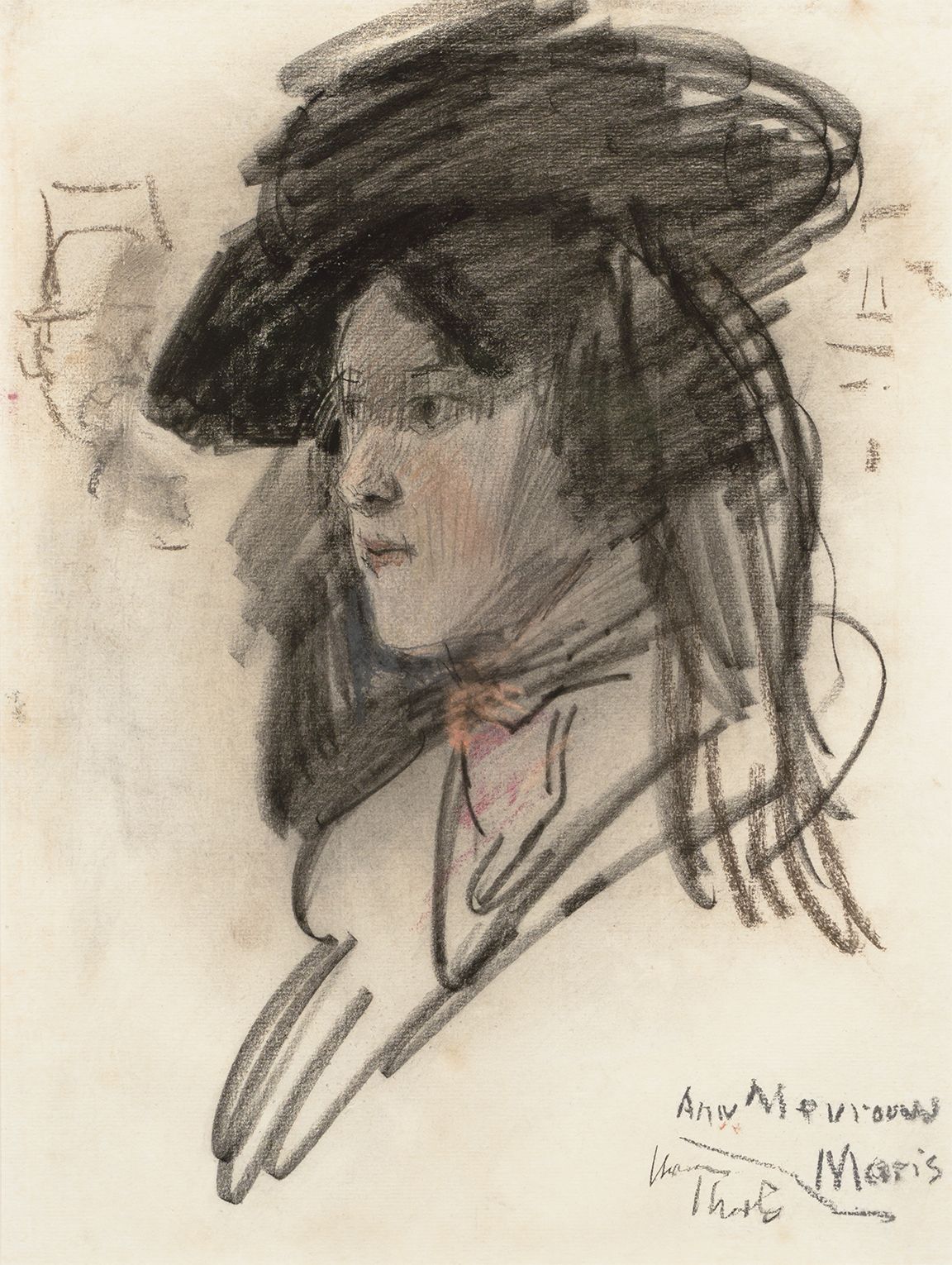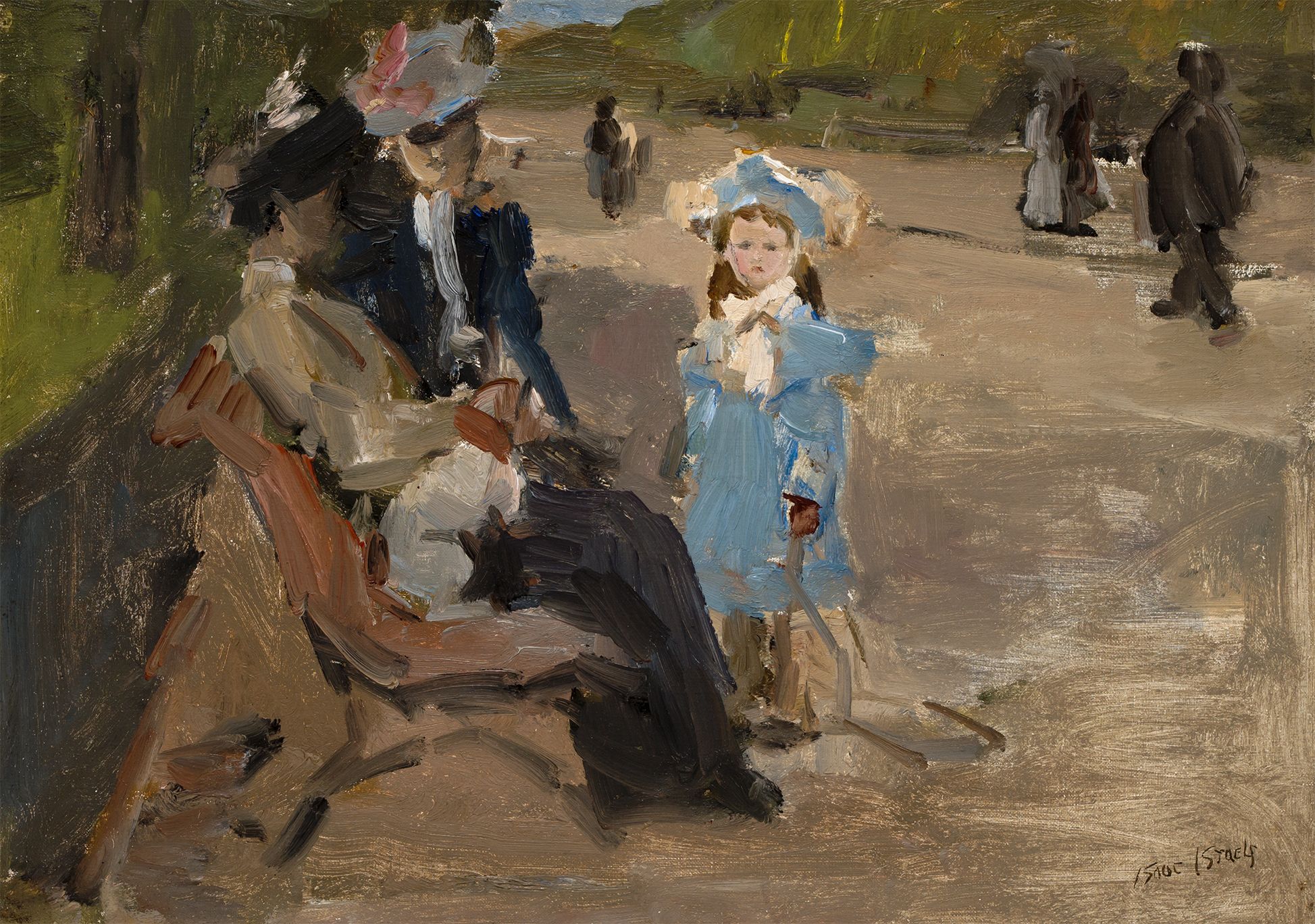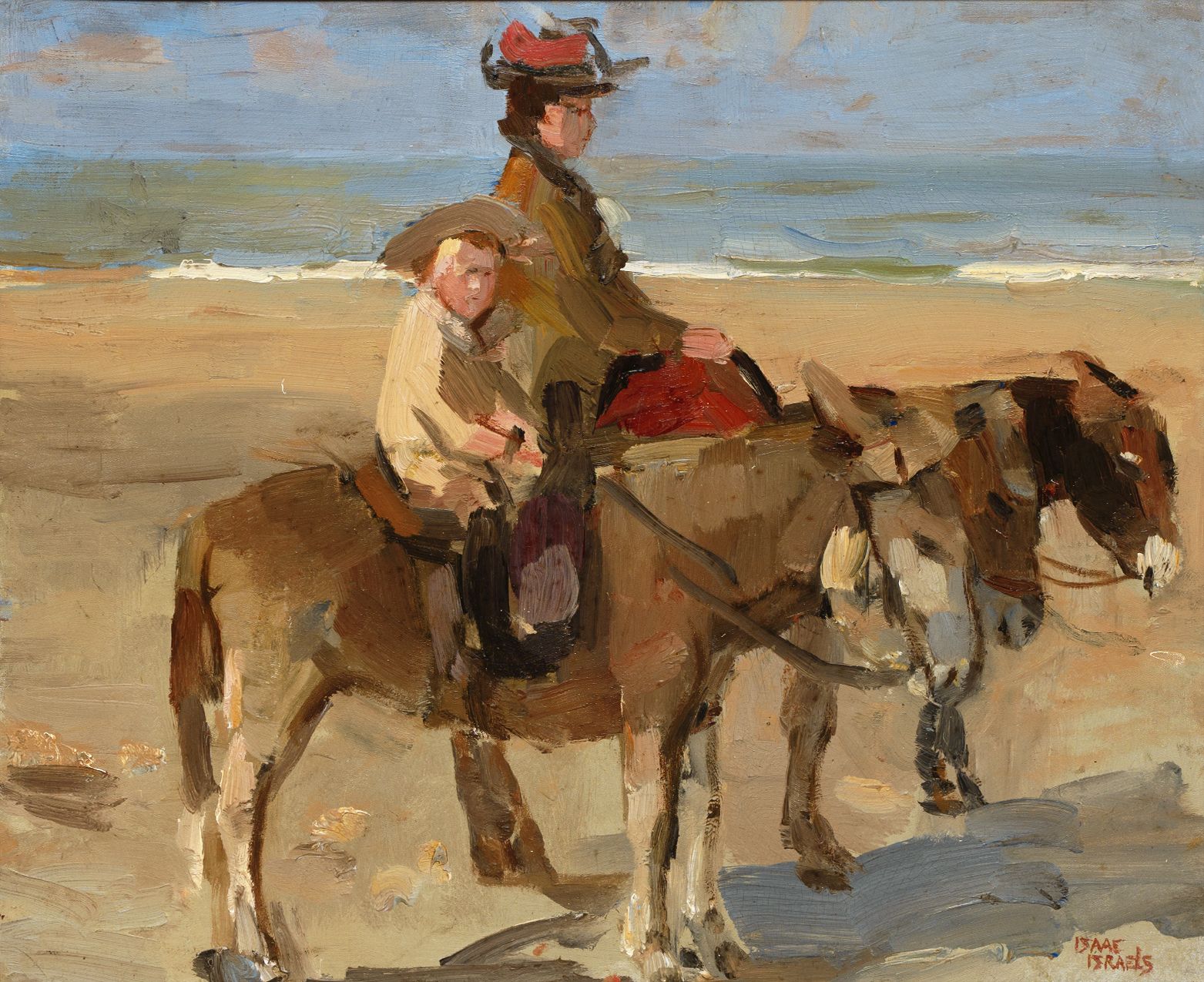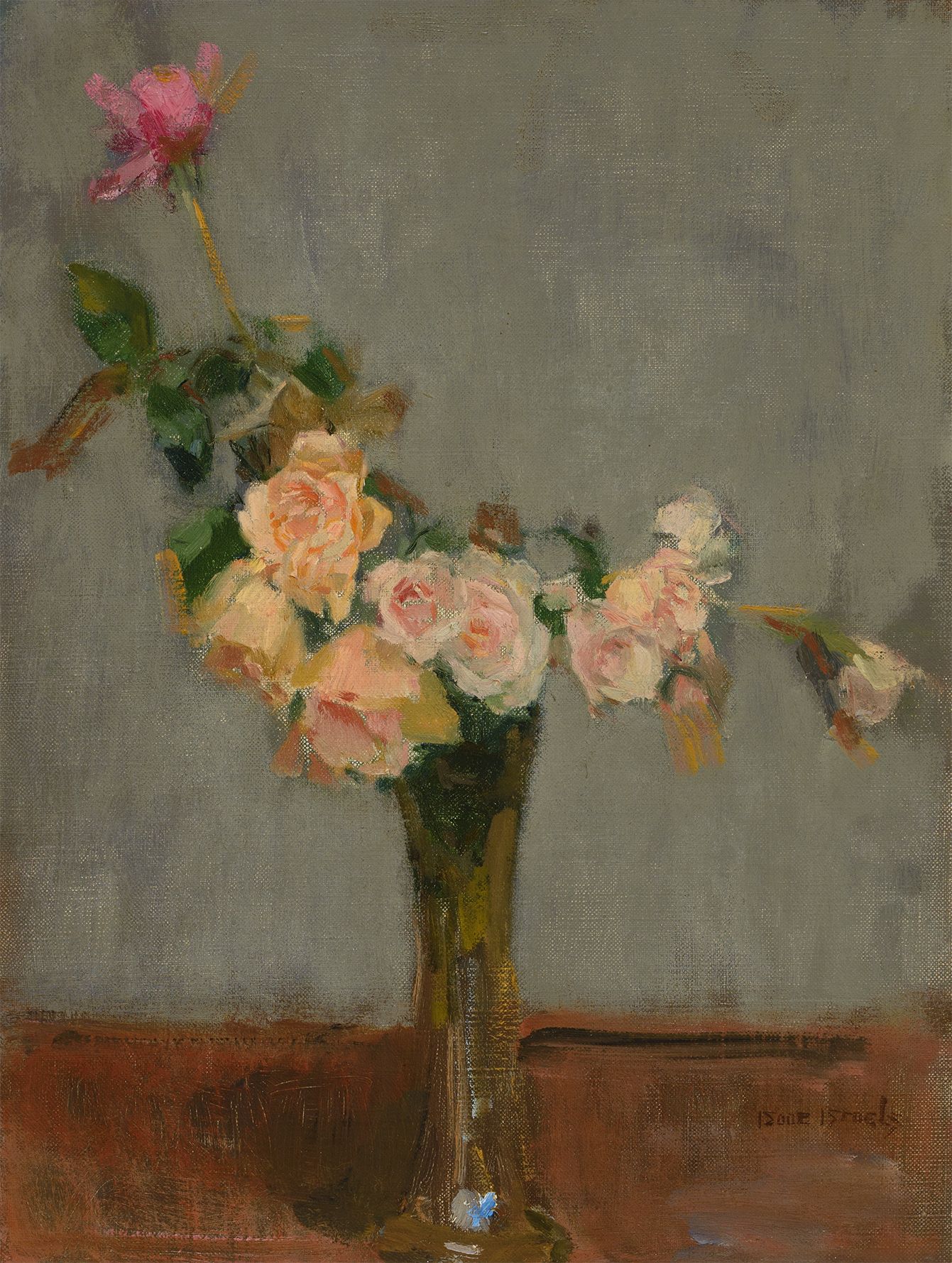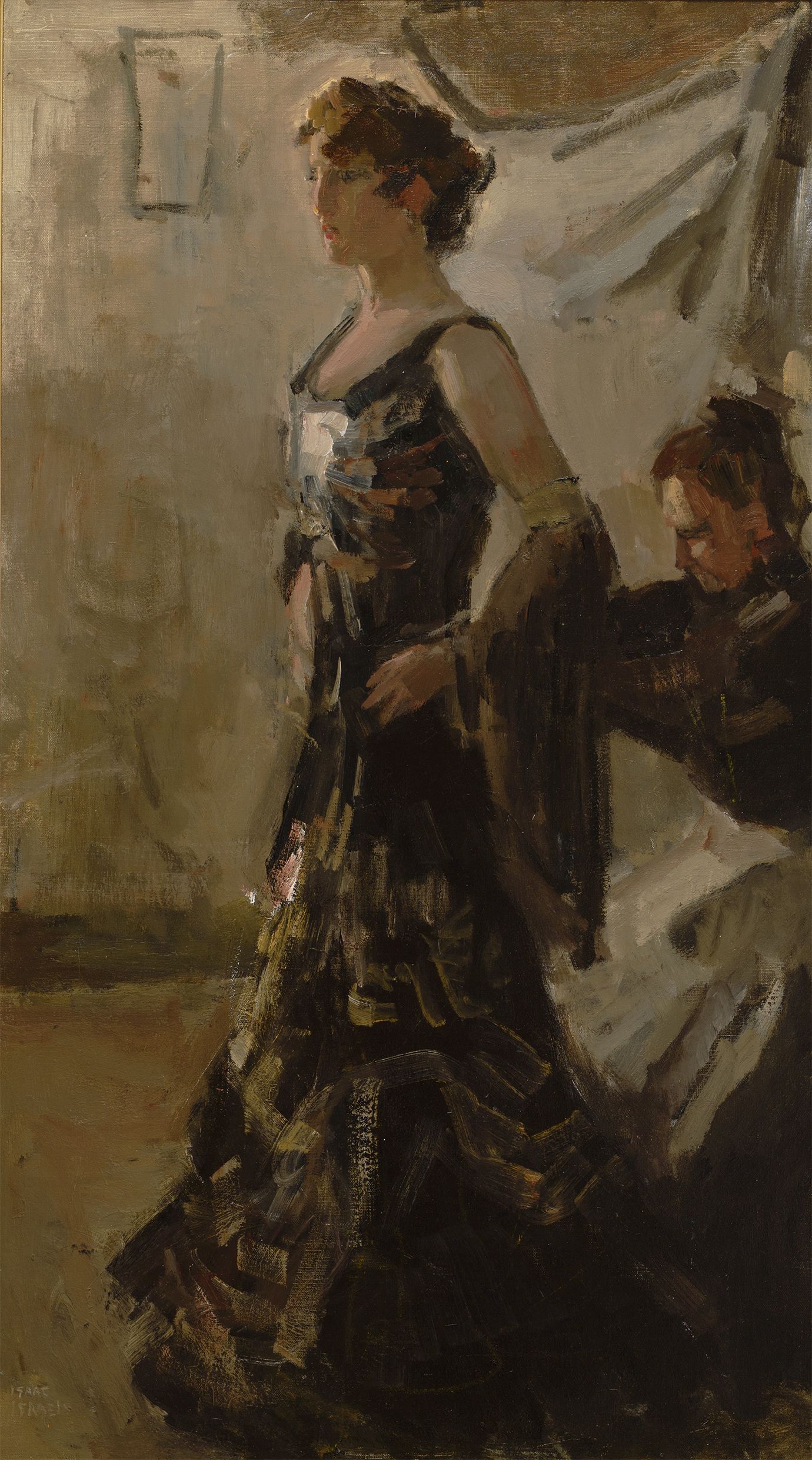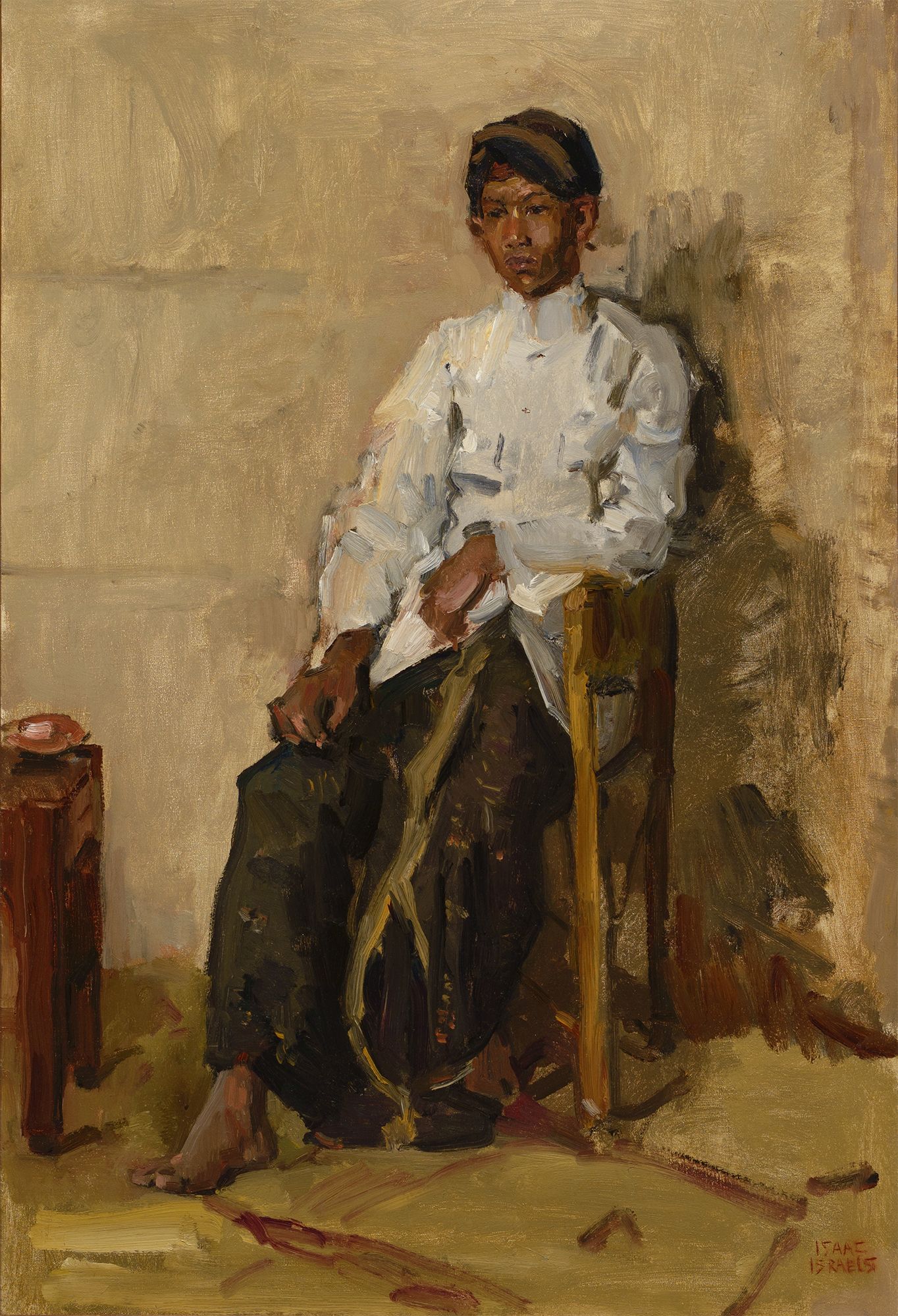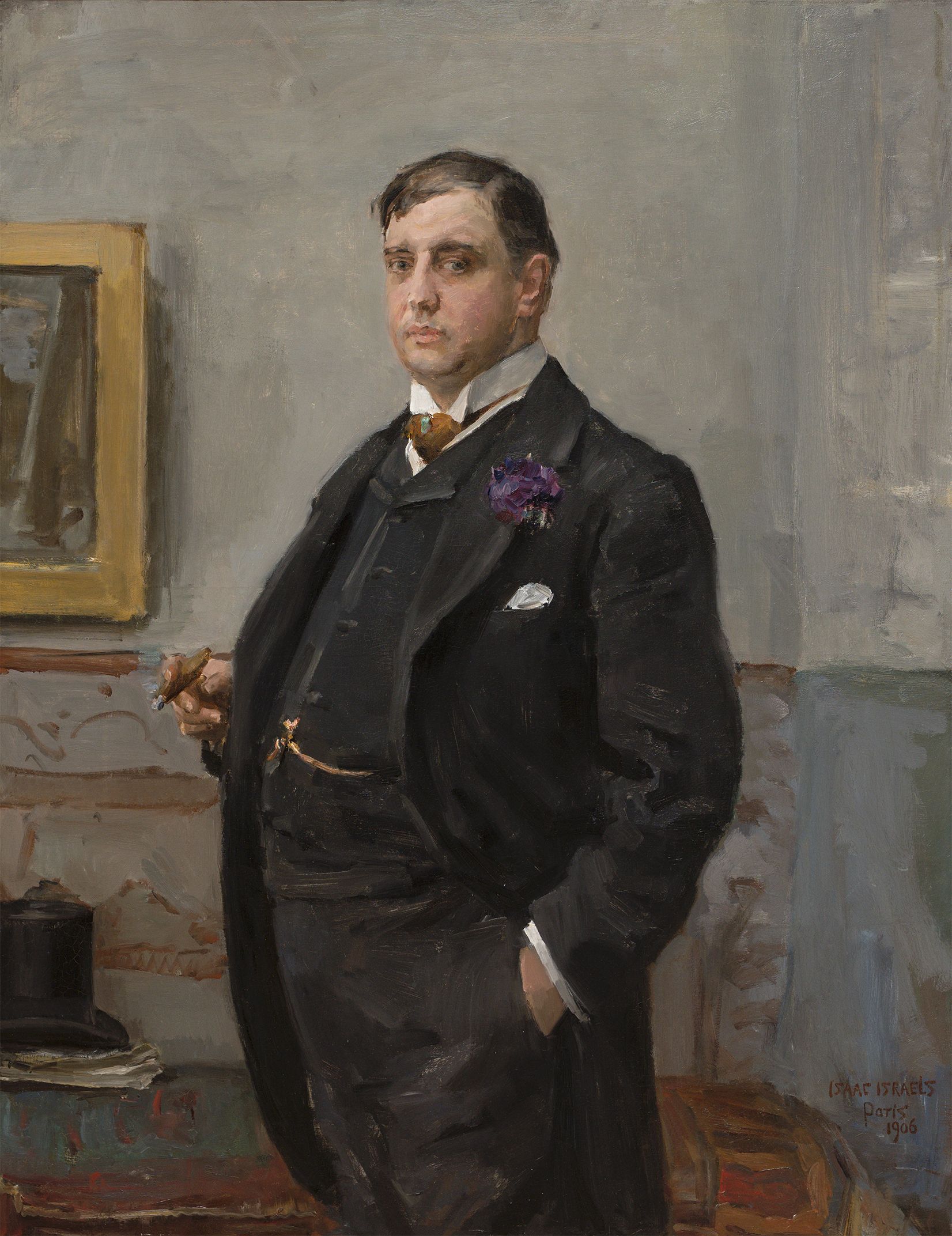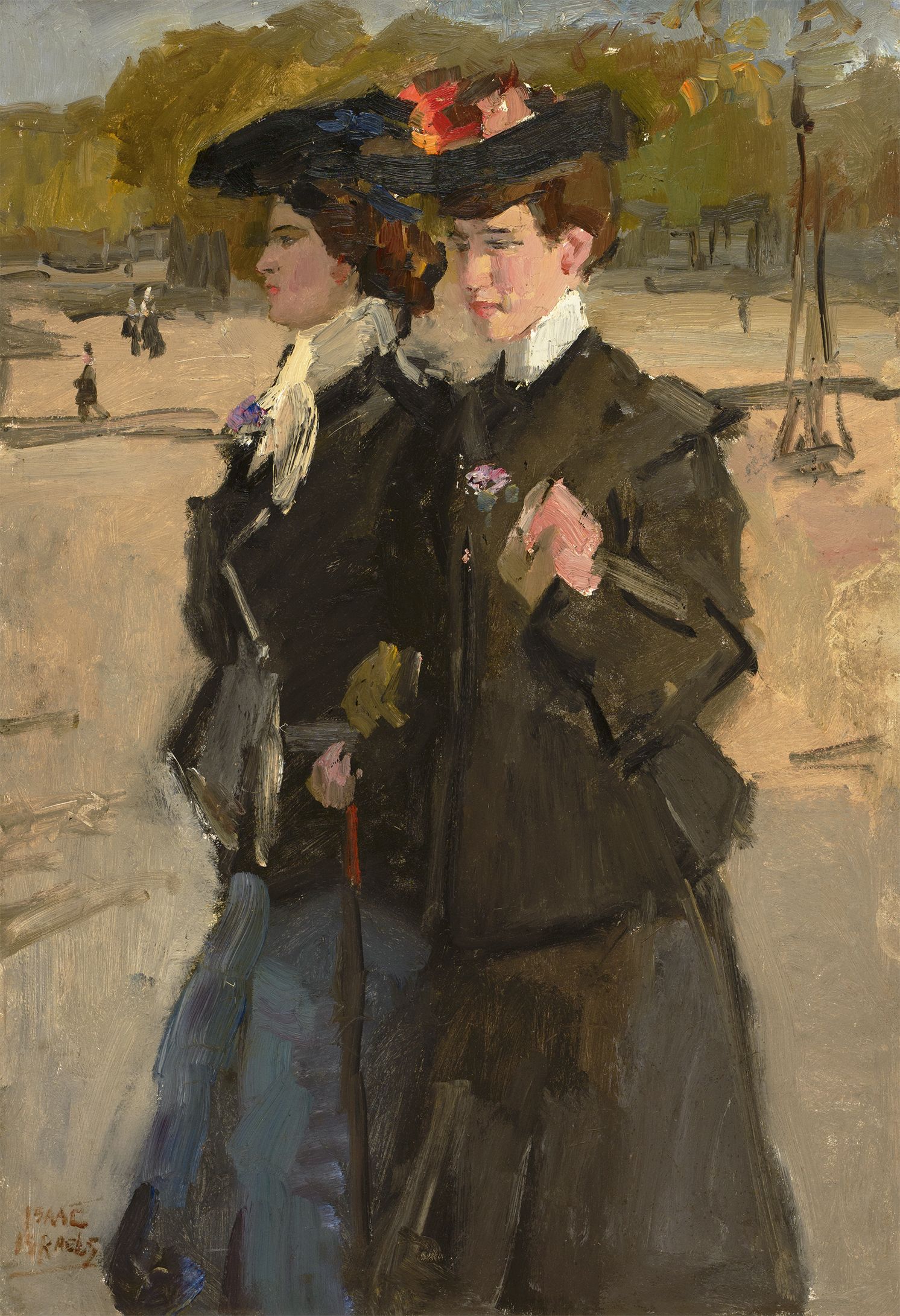I.L. (ISAAC) ISRAELS 1865 Amsterdam - 1934 The Hague On the Bank of the River Thames, Richmond-London
Oil / Canvas: 47 x 61 cm
- This artwork can be viewed in our gallery
- Call us for more information: +31 26 361 1876
- World wide shipping available
Details
‘Ik heb laatst toen ik uit mijn raam keek een aanval van patriotisme gehad tot mijn verbazing. Het hollandsche is toch naar mijn idee het mooiste wat er bestaat.’ schreef Isaac Israels op weg naar Londen vanuit Hamburg aan de schilder Willem Witsen. Dat belette hem niet om rusteloos het continent op en neer te reizen. Israels reisde altijd al graag. Als kind al ging hij jaarlijks met zijn ouders naar Parijs. Hij maakte reizen naar Italië, Spanje en Noord Afrika, Zwitserland, Spanje en Scandinavië om te tekenen en te schilderen. In de jaren ‘20 bracht hij zelfs enige tijd door in Nederlands Indië. Vanaf 1903 had Israels een eigen atelier in Parijs, waar hij zijn favoriete onderwerpen vond onder modieuze Parijzenaars en zich kon onderdompelen in de moderne kunst die daar te zien was. In de lente van 1913 verruilde hij die stad voor Londen, waar hij een tijd een eigen studio had. Ook hier weer was het leven in de grote stad zijn onderwerp. In Richmond aan de rivier de Thames schilderde hij twee dames die op een mooie zomerse dag een boottochtje gaan maken. Een man in een voorschoot, waarschijnlijk de verhuurder van de roeiboot duwt af. Een smalle strook licht op het water leidt ons oog in de verte de rivier op en geeft de toeschouwer het verlangen om mee te gaan. Richmond upon Thames, in het zuidwesten van Londen, is al eeuwen een favoriete bestemming voor de rijkere inwoners van Londen. Er zijn prachtige parken en de rivier de Thames geeft gelegenheid voor boottochtjes en roeiwedstrijden. Een ideale plek voor Israels, die graag de zonnige kant van het leven opzocht. Ook hier weer wist hij een zinderende impressie te geven van mensen die zich vermaken op een zonnige dag op het water.
Toen de Eerste Wereldoorlog uitbrak was hij nog in Londen. "Ik trachtte, zo goed als dat ging, de ogen voor al de afschuwelijke dingen te sluiten. Ik verdiepte mij meer dan ooit in mijn werk, en ik had het liefst oogkleppen gedragen." Hij zag wel hoe het stadsleven doorging en verdiepte zich in winkelende mensen, paardrijdsters in Hyde Park, danseresjes in een balletschool en bootjes op de Thames. Toen hij in Londen na het uitbreken van de oorlog niet meer op straat mocht schilderen huurde hij boksers, een boksring en toeschouwers en ging aan het werk. Ondanks alle reizen en alle indrukken bleef Israels altijd zichzelf. Hij was in Parijs een buurman van Picasso, ging de stad in met Kees van Dongen, bewonderde de symbolist Odilon Redon en had een tijd een van de Zonnebloemen van Vincent van Gogh aan de muur. Door al die moderne indrukken liet hij zich echter niet meer van zijn moeizaam ontwikkelde pad afbrengen. Na zijn Amsterdamse jaren werd zijn palet wat lichter en zijn onderwerpen mondainer, maar hij bleef tot zijn dood vasthouden aan zijn virtuoze impressionistische stijl. In 1923 vestigde hij zich definitief op de Haagse Koninginnegracht, in het oude atelier van zijn vader.
Width: 61 cm
Van Voorst Van Beest Gallery, The Hague 1980's
Sale Christie's Amsterdam, 10 nov. 1987, lot 319
Studio 2000, Blaricum 1990's
Private collection The Netherlands
Over I.L. (ISAAC) ISRAELS
Isaac Israels was the only son of the painter Jozef Israels. The family moved from Amsterdam to The Hague in 1871. Isaac also received his training at the academy at the same time as George Breitner, Floris Verster and Marius Bauer, among others. He was a promising artist from an early age and won awards for his paintings. In the '80s, Isaac specialized in military subjects, an interest he shared with Breitner and Verster. Despite this promising start, he felt his education was not yet complete and went to Amsterdam, where he was accepted into the circle of the Tachtigers. Turbulent city life became the common thread through his work. Between 1887 and 1894, things were quiet around him: few paintings are known from this period. Starting in the mid-1890s, Israels went back to The Hague in the summers where he and his father would paint at the beach. They rented a villa in Scheveningen. His paintings of donkey-riding children were crowd pleasers and are still extremely popular. Israels joked that selling a painting was "the Highest of Arts." His donkey-riding children were eagerly purchased at high prices, and can be considered highlights of his oeuvre for just that reason. Isaac Israels was not only the virtuoso painter of modern (city) life, he was also a gifted portraitist. Especially in the last phase of his life, he commissioned portraits of important Dutchmen. Even in this genre, women remained his favorite subject. All his life he preferred to draw and paint maids, Amsterdam street girls, telephone operators, mannequins in department stores and nude models. His portraits of women are also highlights of his oeuvre, such as of the spy Mata Hari, the first female doctor Aletta Jacobs and the actress Fie Carelsen. Isaac Israels was accustomed to giving a quick characterization of his models. A crisp characterization had to appear on the canvas at once. As such, his best paintings are vivid, spontaneous and struck just right. 'I had an attack of patriotism the other day when I looked out my window to my surprise. Surely the Hollandsche is to my mind the most beautiful thing there is,' Isaac Israels on his way to London from Hamburg to the painter Willem Witsen. That did not prevent him from traveling up and down the continent. Israels always loved to travel. Even as a child, he went to Paris with his parents every year. He made trips to Italy, Spain and North Africa, Switzerland, Spain and Scandinavia to draw and paint. In the 1920s, he even spent some time in the Dutch East Indies. Starting in 1903, Israels had his own studio in Paris, where he found his favorite subjects among fashionable Parisians and was able to immerse himself in the modern art on display there. In the spring of 1913, he traded that city for London, where he had his own studio for a time. Despite all the travel and all the impressions, Israels always remained himself. He was a neighbor to Picasso in Paris, went into town with Kees van Dongen, admired the symbolist Odilon Redon and for a time had one of Vincent van Gogh's Sunflowers on his wall. All these modern impressions, however, did not allow him to be diverted from his laboriously developed path. After his Amsterdam years, his palette became lighter and his subjects more mundane, but he stuck to his virtuoso impressionist style until his death. In 1923 he settled permanently on Koninginnegracht in The Hague, where he had left his father's studio vacant until long after his death.

